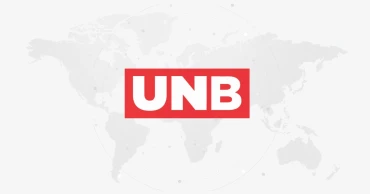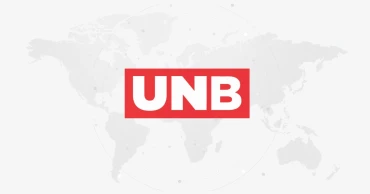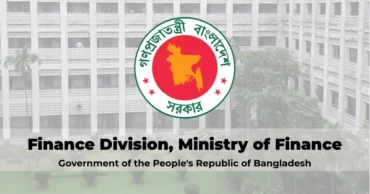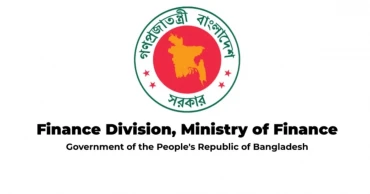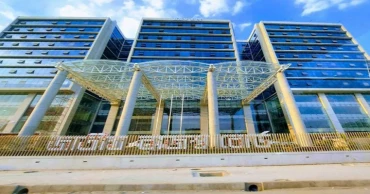Macroeconomic Policy
Finance Ministry stresses the importance of balancing recurrent and capital expenditure
The Finance Ministry has highlighted the crucial need for a balanced approach to budgetary allocations between recurrent and capital expenditure, recognizing their collective impact on the country's growth prospects and social welfare. This perspective is outlined in the ministry's document, the 'Medium Term Macroeconomic Policy Statement (2023-24 to 2025-26)', which underscores the different priorities of developed and developing nations in terms of government spending.
Developed countries often prioritize transfers and subsidies, whereas developing economies are more inclined towards investing in social and community services. Despite the positive outcomes from income transfers in enhancing citizens' lives, there is a pressing need to ramp up capital expenditure to cater to the increasing public investment demands and foster the creation of productive assets.
Budgetary classifications broadly categorize government spending into recurrent and capital expenditures. Recurrent expenditure encompasses wages, goods and services purchases, subsidies, transfer payments, and interest on loans. In contrast, capital expenditure is directed towards building and enhancing productive assets, including developments under the Annual Development Program (ADP) and non-ADP initiatives.
Sikder Group responds to allegations following ACC case against directors
The trend in capital expenditure, representing a portion of the total expenditure, has seen an upward trajectory, albeit with fluctuations, while recurrent expenditure has shown a gradual decrease. The revised budget for the fiscal year 2022-23 allocated 59.1 percent to recurrent expenditures, with projections indicating a slight reduction over the next three years. Meanwhile, capital expenditure is set to rise from 40.9 percent in the 2022-23 fiscal year to 41.3 percent by 2026, reflecting an ongoing commitment to bolstering public investment.
The increase in recurrent expenditure from 56.7 percent in FY 2017-18 to 59.4 percent in FY 2021-22 was influenced by various stimulus packages introduced to support vulnerable groups during the combined challenges of the COVID pandemic and the Russia-Ukraine conflict. Conversely, capital expenditure through the ADP, a critical component of the budget, has experienced modest growth from 4.5 percent of GDP in FY18 to an estimated 5.1 percent of GDP in FY 2022-23.
This strategic focus on balancing recurrent and capital expenditures aligns with the government's objectives to drive sustainable economic growth while ensuring the welfare of its citizens through prudent fiscal management.
Eid holiday: Trade activities through Benapole port to be suspended for 5 days
1 year ago
Urgent monetary reform, single exchange rate regime critical to improve foreign exchange reserves and ease inflation: World Bank
Bangladesh's economy made a strong turnaround from the COVID-19 pandemic, but the post-pandemic recovery continues to be disrupted by high inflation, a persistent balance of payments deficit, financial sector vulnerabilities, and global economic uncertainty, says the World Bank in its twice-yearly update.
Released today, the latest Bangladesh Development Update says that urgent monetary reform and a single exchange rate regime will be critical to improve foreign exchange reserves and ease inflation. Greater exchange rate flexibility would help restore balance between demand and supply in the foreign exchange market.
“Bangladesh’s strong macroeconomic fundamentals have helped the country overcome many past challenges,” said Abdoulaye Seck, World Bank Country Director for Bangladesh and Bhutan.
“Faster and bolder fiscal, financial sector, and monetary reforms can help Bangladesh to maintain macroeconomic stability and reaccelerate growth,” he added.
Structural reforms will be key to diversify the economy and build resilience over the medium and long term, including measures to raise government revenues to support investments in infrastructure and human capital, said the global lending agency.
Persistent inflation eroded consumer purchasing power, while investment was dampened by tight liquidity conditions, rising interest rates, import restrictions, and increased input costs stemming from upward revisions in administered energy prices.
Foreign Minister for concluding PTA with Indonesia
Private sector credit growth slowed further in FY24, reflecting a broader slowdown in investment.
The non-performing loan (NPL) ratio in the banking sector remains high and understates banking sector stress due to lax definitions and reporting standards, forbearance measures, and weak regulatory enforcement.
The balance of payments deficit moderated over the first half of FY24 driven by a surplus in the current account.
The report’s companion piece, the latest South Asia Development Update — Jobs for Resilience, also released today, says that South Asia is expected to remain the fastest-growing region in the world for the next two years, with growth projected to be 6.0% in 2024 and 6.1% in 2025.
Growth in South Asia is expected to be driven mainly by robust growth in India and Bangladesh, and recoveries in Pakistan and Sri Lanka.
But this strong outlook is deceptive, says the report. For most countries, growth is still below pre-pandemic levels and is reliant on public spending.
Persistent structural challenges threaten to undermine sustained growth, hindering the region’s ability to create jobs and respond to climate shocks.
Private investment growth has slowed sharply in all South Asian countries and the region is not creating enough jobs to keep pace with its rapidly increasing working-age population.
“South Asia’s growth prospects remain bright in the short run, but fragile fiscal positions and increasing climate shocks are dark clouds on the horizon,” said Martin Raiser, World Bank Vice President for South Asia.
“To make growth more resilient, countries need to adopt policies to boost private investment and strengthen employment growth.”
Saima Wazed, Princess Dechen Yangzom Wangchuck launch Bhutanese version of Bangabandhu’s ‘Unfinished Memoirs’
South Asia’s working-age population growth has exceeded than that in other developing country regions.
The share of the employed working-age population has been declining since 2000 and is low.
In 2023, the employment ratio for South Asia was 59%, compared to 70% in other emerging markets and developing economy regions.
It is the only region where the share of working-age men who are employed fell over the past two decades, and the region with the lowest share of working-age women who are employed.
“South Asia is failing right now to fully capitalize on its demographic dividend. This is a missed opportunity,” said Franziska Ohnsorge, World Bank Chief Economist for South Asia.
“If the region employed as large a share of the working-age population as other emerging markets and developing economies, its output could be 16% higher.”
Read more: Money launderers destroying country's economy: Salma Islam
1 year ago
Amid lower govt spending relative to GDP, Bangladesh plans increased investment to stimulate pvt sector
Bangladesh's Finance Ministry is tackling what it identifies as one of its most formidable challenges: significantly amplifying public expenditure to catalyse sustained growth within the private sector.
An official document from the ministry underscores that, in comparison to other economies, Bangladesh's government spending as a percentage of GDP markedly trails, thereby emphasising the urgency to augment investment.
Data from the World Economic Forum and the IMF (as of April 2023), reveal Bangladesh's public expenditure at 13.1% of its GDP, a figure that stands in stark contrast to countries like France at 58.5%, Sweden at 46.8%, and even neighbouring India at 28.8%. This discrepancy highlights the room for growth in Bangladesh's fiscal strategy.
The government, aiming to elevate GDP growth and living standards, views the expansion of its expenditure as crucial. This ambition is supported by the progressive implementation of reforms in Public Financial Management. Historically, the government has gradually increased its spending relative to GDP, signaling a positive trajectory.
Interest rate for April set at 13.55%, for consumer loans add 1%
Outlined in the 'Medium Term Macroeconomic Policy Statement (2023-24 to 2025-26)' from the Finance Division, the government's medium-term strategy is geared towards securing inclusive and high growth. This strategy is aligned with Bangladesh's Vision 2041, the 8th Five Year Plan, and the Sustainable Development Goals (SDGs), focusing on priority sectors including infrastructure, industrial production, food security, job creation, healthcare, and education among others.
In anticipation of the demands of the Fourth Industrial Revolution (4IR), significant allocations have been dedicated to human resource development, particularly in education and skills training. The fiscal projections set public expenditure targets at 15.2% for the 2023-24 fiscal year, 15.4% for 2024-25, and 16.2% for 2025-26.
The document further highlights Bangladesh's progression to a lower-middle-income country, with aspirations to attain upper-middle-income status by 2031. This ambition aligns with the developmental targets set within the 8th Five Year Plan and reflects the government's commitment to resuming the rapid economic growth witnessed pre-COVID-19 and pre-Russia-Ukraine war.
Banks to remain open on April 5, 6, and 7 for payment of garment workers’ salary, bonus
In response to the COVID-19 pandemic, the government prioritised life and livelihood protection, adopting an expansionary fiscal policy and channeling additional funds into critical sectors.
Despite the global political and economic instability, these measures have begun to show promise, with expectations of returning to pre-pandemic growth levels and policies aimed at promoting pro-poor and inclusive growth.
As Bangladesh looks forward, the Finance Ministry is set on formulating strategies to enhance pro-poor growth, stimulate both domestic and international private investment, bolster public investment, curb inflation, generate employment, and alleviate the balance of payment pressures. These objectives underscore a holistic approach to not only recovering from recent global challenges but also setting a solid foundation for long-term, sustainable development.
1 year ago
Govt has no complete list of public services against which it levies fees or charges: Finance Ministry document
The government of Bangladesh has no complete list of public services against which it levies fees or charges.
“There are thousands of public services against which the government levies fees or charges, but there is no complete list of such fees and charges and when those were imposed,” according to an official document of the Finance Ministry.
According the official document titled ‘Medium Term Macroeconomic Policy Statement (2023-24 to 2025-26)’ of the Finance Division of the Finance Ministry, the government has partially set up an online database of all non tax revenue (NTR) items with the fees, charges or prices and their dates of imposition.
“This partial database has opened scope with the hope of increasing NTR income manifolds from administrative fees,” it said.
On the other hand, the government is not only focusing on enhanced revenue mobilisation from NTR by raising fees or charges, but also putting its best effort to ensure efficient and satisfactory service delivery.
Take the country forward foiling conspiracies: PM Hasina urges in Independence Day speech
The government has taken numerous initiatives to make service delivery systems paperless and to minimise human deployment in this system. This is one of the key features to building Smart Bangladesh by 2041, the document said.
The government has multiplied public investment during the last one and a half decade, of which the SOEs/Autonomous Bodies (ABs) have enjoyed capital support either in the form of loans or equities.
Loans are registered under government accounts through Subsidiary Loan Agreements (SLAs) and thereby interest is charged.
“However, there is no consolidated database for equity investments of the government and therefore there is no precise estimate for dividend income,” the official document said.
The government has taken the initiative to create an exhaustive database for equity investments in the SOEs/ABs as well as establish a Financial Reporting Council for setting standard financial statements to ensure proper assessment of these organisations.
According to the ‘Medium Term Macroeconomic Policy Statement (2023-24 to 2025-26)’, With the economic advancement of the country the scope and volumes of public services have evolved and expanded.
Read more NBR’s three-pronged strategy to boost revenue collection
Government organisations are engaged in delivering various new services in new forms to the public.
The government has taken initiatives to explore such novel and voluminous services against which fees/charges may be collected through organising stakeholders’ consultation workshops, seminars, etc.
As per the Medium Term Macroeconomic Policy Statement (2023-24 to 2025-26) of the Finance Division, some Tk 5343 billion will come from tax revenue sector in the 2024-25 fiscal year and Tk 6463 billion in 2025-26 fiscal year.
In the next two fiscal years, the National Board of Revenue (NBR) will provide Tk 5095 billion and Tk 6171 billion.
From the Income Tax wing, the collection will be Tk 1753 billion for the next fiscal while Tk 2123 billion for 2025-26 fiscal, and the collection from import duties will be Tk 1511 billion and Tk 1830 billion respectively.
From the VAT and supplementary Duties, the revenue collection will be Tk 1831 billion and Tk 2218 billion respectively.
The non-NBR tax for the 2024-25 fiscal and 2025-26 fiscal will be Tk 248 billion and Tk 292 billion respectively with non-tax revenue collection will be Tk 529 billion and Tk 634 billion respectively.
The target for running 2023-24 fiscal is Tk 5000 billion with Tk 4500 billion from tax revenue. Of the total amount, Tk 4300 billion will come from NBR through Tk 1480 billion from income tax, Tk 1275 billion from import duties, Tk 1545 billion from VAT and supplementary duties. Some Tk 200 billion will be collected from the non-NBR sector while Tk 500 billion from the non-tax revenue sector.
Young entrepreneurs must step up to break the hold of syndicates: DG of Consumer Rights
1 year ago
NBR’s three-pronged strategy to boost revenue collection
Aiming to significantly boost revenue collection from domestic sources, the National Board of Revenue (NBR) is adopting a three-pronged approach.
These are: digital transformation, expansion of tax net, and enhancing administrative capacity.
The core idea is to make tax payments easy and transparent to improve taxpayer services which in turn will help NBR to collect more revenue, according to an official document.
According to the Medium Term Macroeconomic Policy Statement (2023-24 to 2025-26) of the Finance Division of Finance Ministry, the government has taken some Major reform measures to materialise the move.
The VAT & Supplementary Duty Act 2012 has been implemented in July 2019. With the implementation of the new act, the collection of VAT and supplementary duty is expected to receive a significant boost in the medium term. After the initial hiccup and the shortfall due to the outbreak of COVID-19, revenue collection accelerated in FY22.
The government has enacted the new Customs Act, which replaced the Customs Act 1969. International best practices in customs, including that of the World Customs Organization (WCO), the revised KYOTO Convention and the WTO Trade Facilitation Agreement have been incorporated here.
NBR will go after house and flat owners for not filing returns; NBR Chairman
The law aims to harmonise and simplify customs processes to facilitate the collection of custom duties.
The new Income Tax Act is also expected to create an enabling environment for taxpayers, streamline income tax assessment and collection, and facilitate domestic and foreign investment.
To implement the new VAT law, the NBR undertook the ‘VAT Online Project (VoP)’ which was in operation since 2013 and concluded in June 2021.
Under the VOP, the official document said that the three important automation measures have been completed. First, the Online VAT Registration began in March 2017. Again, the central registration system has been in force since July 2019. The NBR has introduced online return submission in July 2019. The digital filing system has been introduced in the form of online submission of VAT returns.
The NBR has rolled out the electronic payment (e-payment) of customs duties in 2017, income tax in 2012 and VAT in 2020. Income tax can be paid through MFS (mobile financial services) as well.
To facilitate real-time deposit of government money to the national exchequer, the government has launched the Automated Invoice Portal. This Automated Challan (also known as A-Challan) will act as the receipt window of the government. The payment of income tax has already been brought under the A-Challan system on a pilot basis.
The NBR now plans to expand its use for payment of VAT and customs duties. The A-Challan will ensure the timely deposit of money including the prevention of fake return submission and revenue evasion.Moreover, the discrepancy between the amount of revenue collected by the NBR and the accounts given by the Accounting Offices will be eliminated.
The Medium Term Macroeconomic Policy Statement (2023-24 to 2025-26) said that individual taxpayers can now submit their tax returns online.
NBR extends deadline for filing companies’ tax returns to April 30
The NBR has successfully launched eTDS Environment for easy and hassle-free processing of income tax at the source. With the introduction of this system, taxpayers’ time, cost and visits have been reduced to almost zero. Taxpayers can now submit fourteen reports in the eTDS environment.
To stop evasion in VAT and enhance VAT collection, the government has introduced Electronic Fiscal Devices (EFD) with a sales data controller mechanism.
The government has already installed 9270 EFD/SDC (Sales Data Controller) machines. NBR has selected 24 sectors, including residential hotels, bakeries and fast foods, decorators and caterers, sweet shops etc. for this purpose.
To broaden the coverage, the government has decided to outsource the installation of EFD/ SDC machines with a target of 60,000 EFD/ SDC in the first phase and 3,00,000 in five years, if the first phase brings good results.
Besides, to prevent tax evasion and to bring transparency in VAT record keeping, the government has made the use of NBR-prescribed VAT software mandatory in VAT-registered industries with annual turnovers of Tk 5 crore or above.
The NBR has made provisions to enable internet-based companies, such as Google, Facebook, Microsoft etc. to pay their VAT on online sales.
This allows these companies to pay their VAT through their authorised VAT agents without opening their office in Bangladesh.
The NBR plans to operationalise the risk management system to ensure that no more than 10 percent of the import consignments are subject to physical examination. To that end, the NBR has established a Central Risk Management Unit/Commissionerate for Customs.
To streamline the bonded warehousing system, reduce its misuse and make it transparent, the government has taken a project that aims to automate the bond management system by June 2023. Meanwhile, the licensing module has started operation and other modules will become operational soon.
Bangladesh Customs will soon be conducting a Time Release Study in the major custom houses to take stock of the actual time taken in the release of imported consignments. The objective of the TRS will be to identify bottlenecks in customs clearance and to take measures to reduce clearance time.
The NBR strives to expand the number of taxpayers and has made the return submission mandatory for all TIN-holders with a few exceptions.
Other reform efforts by the NBR included – i) implementation and activation of Online National Single Window, Post Clearance Audit, Advance Ruling, Authorised Economic Operator, and thereby increasing dynamism in international trade; ii) full implementation of online income tax return submission under SGMP project; iii) implementation of “Individual Source Tax Deduction Monitoring Zone” to strengthen income tax deduction monitoring; iv) expansion of the e-Payment system in income tax; v) activation of transfer pricing and anti-money laundering activities; and vi) strengthening ICT infrastructure construction and automation activities.
Administrative expansion of the income tax department is underway, the Medium Term Macroeconomic Policy Statement added.
Introduction of the Document Verification System (DVS) has brought financial discipline and positively contributed to boosting tax collection both in income tax and VAT by increasing transparency.
NBR collects nearly Tk 2 lakh crore in 7 months, growth over 15%
1 year ago
